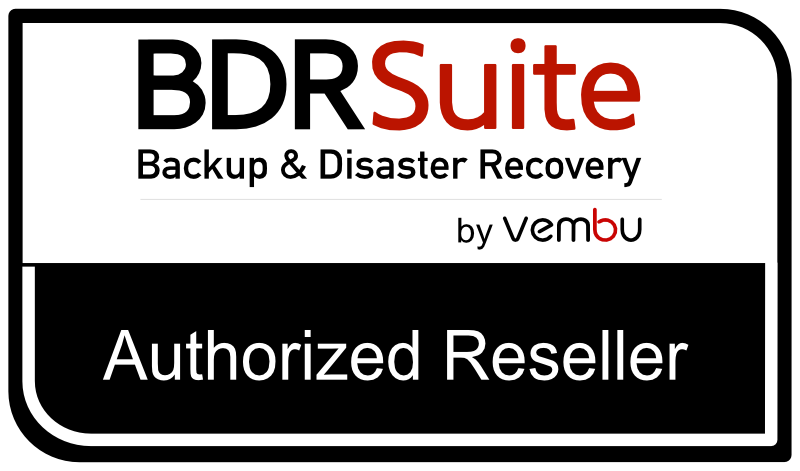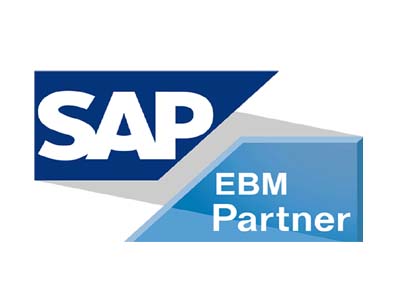Running a business today is not easy. From managing sales and customer relationships to tracking inventory, handling accounts, and overseeing employees, owners and managers often find themselves jumping between multiple software tools. This creates inefficiency, extra costs, and unnecessary complexity.
To solve this challenge, companies are increasingly turning to Odoo, an open-source business management suite. With its modular design and wide range of applications, Odoo helps organizations streamline operations and centralize everything under one platform.
This article explores Odoo in depth—its features, benefits, real-world applications, and why it stands out as a top choice for businesses of all sizes.
What is Odoo?
Odoo is an Enterprise Resource Planning (ERP) system, but unlike traditional ERPs, it’s built to be flexible, affordable, and user-friendly. At its heart, Odoo is modular—businesses can start with just a few apps, such as CRM or invoicing, and expand as they grow.

The software is available in two editions:
-
Community Edition (free, open-source, with essential features)
-
Enterprise Edition (paid, with advanced functionality, cloud hosting, and professional support)
This dual offering makes it accessible to both small startups and large enterprises. Over the years, Odoo has gained worldwide popularity due to its affordability, adaptability, and strong open-source community.
Key Features of Odoo
The platform provides a complete suite of applications. Here are its most notable modules:
1. CRM and Sales
Managing leads and customers is simple with Odoo’s CRM. Teams can track opportunities, schedule follow-ups, and forecast sales using customizable dashboards. The sales module integrates seamlessly, helping create quotations, get digital approvals, and generate invoices in just a few clicks.
2. Finance and Accounting
Odoo’s accounting tools cover everything from automated invoicing to bank synchronization. Businesses can monitor cash flow, track expenses, and generate tax reports effortlessly. For international companies, the system supports multi-currency transactions and compliance with various tax rules.
3. Inventory and Supply Chain
Accurate stock management is critical for retailers and manufacturers. Odoo’s inventory module offers barcode scanning, real-time tracking, and automated replenishment. It integrates with purchasing, sales, and eCommerce modules, ensuring smooth supply chain operations.
4. Manufacturing
Factories can manage production lines with bills of materials, scheduling, and quality control features. The module also supports advanced manufacturing needs like work centers, maintenance, and product lifecycle management.
5. Human Resources
From recruitment to payroll, Odoo HR centralizes employee management. Features include attendance tracking, performance appraisals, leave management, and even e-learning. It helps HR teams reduce paperwork and focus on employee engagement.
6. eCommerce and Website
The built-in website builder allows companies to launch online stores quickly. Integrated with inventory and sales, it ensures that orders, stock, and payments remain synchronised. The drag-and-drop editor makes it easy to design attractive pages without coding.
7. Project Management
Odoo provides multiple project views—Kanban, Gantt, and calendar—helping teams stay organized. Tasks can be assigned, deadlines set, and progress monitored in real time. This boosts productivity and collaboration.
8. Marketing Tools
Email marketing, SMS campaigns, and marketing automation are included. Businesses can target the right audience, track engagement, and optimize campaigns. Integration with CRM ensures customer data is used effectively.
Benefits of Using Odoo
Companies adopt Odoo for many reasons. Some of the most valuable benefits include:
-
Centralized System – No more switching between separate tools for sales, accounts, and HR. Everything is under one roof.
-
Cost Savings – Unlike many ERP systems, Odoo is affordable, especially for small and medium businesses.
-
Scalability – Start small and add apps as your business grows.
-
Customization – As open-source software, it can be tailored to fit unique workflows.
-
Modern Design – Its interface is clean, mobile-friendly, and easy to learn.
-
Community and Partner Network – Thousands of developers and certified partners provide ongoing support and innovation.
Real-World Applications
Different industries use Odoo in different ways:
-
Retail and Wholesale – Manage POS systems, online stores, and inventory in a unified system.
-
Manufacturing – Track raw materials, manage production lines, and ensure timely deliveries.
-
Healthcare – Store patient records, handle billing, and schedule appointments.
-
Education – Manage admissions, student records, and e-learning platforms.
-
Professional Services – Track projects, billable hours, and client invoices.
For example, a small online shop can begin with eCommerce, Inventory, and Invoicing apps, then expand into CRM and Marketing Automation as it grows. Meanwhile, a global manufacturer may use advanced modules like Supply Chain, Manufacturing, HR, and Quality Control.

Odoo vs. Other ERP Systems
How does Odoo compare with other ERP platforms?
-
SAP – Very powerful but expensive and complex. Odoo offers similar functionality at a fraction of the cost.
-
Oracle NetSuite – Cloud-based and strong for large enterprises, but less flexible for smaller businesses. Odoo is more modular and affordable.
-
Microsoft Dynamics – Well-integrated with Microsoft products, but licensing can be costly. Odoo’s open-source model provides more freedom.
The main difference is flexibility and affordability. Odoo is designed to scale with businesses of all sizes, unlike traditional ERPs that often require heavy investment from the start.
Implementation Considerations
Adopting Odoo can transform operations, but planning is essential. Companies should consider:
-
Needs Assessment – Identify which modules are necessary today and which can be added later.
-
Customization – Decide whether to use the standard features or invest in custom development.
-
Training – While Odoo is user-friendly, employee training ensures smoother adoption.
-
Support – Businesses can choose community forums, Odoo partners, or enterprise support.
-
Budgeting – Consider the cost of hosting, customization, and support in addition to licensing.
With the right approach, implementation can be smooth and highly rewarding.
Case Study: Small Business Example
Imagine a growing fashion retailer. Initially, the company tracks sales manually, manages inventory through spreadsheets, and uses separate accounting software. As sales increase, mistakes in stock counts, delayed invoices, and poor customer tracking start hurting the business.
By implementing Odoo:
-
Sales are recorded automatically through the POS and online store.
-
Inventory updates in real time.
-
Invoices are generated instantly.
-
CRM tracks customer loyalty and sends personalized offers.
This integrated approach not only saves time but also provides better customer experiences and supports long-term growth.
Case Study: Large Manufacturer
Now consider a mid-sized manufacturer producing electronics. The company deals with complex supply chains, multiple warehouses, and hundreds of employees.
With Odoo’s manufacturing module, the company can:
-
Manage production schedules and raw material planning.
-
Track quality control at every stage.
-
Automate replenishment from suppliers.
-
Sync HR records with payroll and attendance.
This level of control improves efficiency, reduces waste, and ensures on-time delivery.
Challenges and Limitations
No system is perfect, and Odoo has a few challenges:
-
Customization Costs – While flexible, heavy customization may require expert developers.
-
Learning Curve for Complex Modules – Basic features are easy, but advanced modules may need training.
-
Community vs. Enterprise – The free version lacks some advanced tools available only in the enterprise edition.
Despite these limitations, most businesses find the overall value outweighs the drawbacks.
Future of Odoo
The platform is evolving rapidly. Each year, a new version is released with upgrades in usability, security, and performance. With digital transformation becoming essential, Odoo is expected to grow further, offering even more AI-driven automation, analytics, and integrations.

The strong developer community and growing global adoption mean that Odoo will remain one of the most competitive ERP solutions in the market.
Final Thoughts
Odoo is more than just another ERP—it’s a comprehensive business platform that adapts to organizations of all sizes. Its modular design, affordability, and strong community make it an attractive option for startups, SMEs, and even larger corporations.
By centralizing operations into one system it reduces inefficiencies, lowers costs, and provides better visibility into business performance. Whether you’re managing a small online shop or running a complex manufacturing unit, Odoo offers the flexibility and tools to grow with you.
For companies searching for a reliable, scalable, and cost-effective business solution, Odoo deserves serious consideration.










 Samapak Food Industry is one of PMS’s satisfied e-commerce websites. Sama Pak Food is the webshop where you can find all your care products. The webshop was founded after customers from both at home and abroad asked us if we could send the products to them.
Samapak Food Industry is one of PMS’s satisfied e-commerce websites. Sama Pak Food is the webshop where you can find all your care products. The webshop was founded after customers from both at home and abroad asked us if we could send the products to them. Alkaram Foam is one of PMS’s dynamic websites. Alkaram Foam is a name of quality, luxury, and comfort. We offer foam mattress, spring mattress and medicated mattress at market-beating prices. Also, we make EPE foam rolls (Jumbolon rolls) and EPE shells (Jumbolon shells) for businesses.
Alkaram Foam is one of PMS’s dynamic websites. Alkaram Foam is a name of quality, luxury, and comfort. We offer foam mattress, spring mattress and medicated mattress at market-beating prices. Also, we make EPE foam rolls (Jumbolon rolls) and EPE shells (Jumbolon shells) for businesses. Al Noor Rice Corporation is one of PMS’s satisfied e-commerce websites. AL NOOR provides the best quality of Rice to its customers all over Pakistan and the Rest of the World. We are renowned for producing different varieties of Basmati like Super Basmati Rice, 1121 Basmati Rice, 1509 Basmati Rice, and various categories of non-Basmati rice like C9, 386, irri-6 and irri-9.
Al Noor Rice Corporation is one of PMS’s satisfied e-commerce websites. AL NOOR provides the best quality of Rice to its customers all over Pakistan and the Rest of the World. We are renowned for producing different varieties of Basmati like Super Basmati Rice, 1121 Basmati Rice, 1509 Basmati Rice, and various categories of non-Basmati rice like C9, 386, irri-6 and irri-9.



 Skye VIP Cars is one of PMS’s dynamic websites. It offers all kinds of car services in Dubai and all over the UAE, pleasing our clients to the highest level.
Skye VIP Cars is one of PMS’s dynamic websites. It offers all kinds of car services in Dubai and all over the UAE, pleasing our clients to the highest level. Delta Wye Power Incorporation is one of PMS’s satisfied e-commerce websites. Delta Wye Power Inc., another company he is involved with, focuses on medium-voltage transformers.
Delta Wye Power Incorporation is one of PMS’s satisfied e-commerce websites. Delta Wye Power Inc., another company he is involved with, focuses on medium-voltage transformers. County Public High School is one of the best dynamic websites of PMS. CPS Gujrat has been set up to provide a sound education to the students with special emphasis on character building and the development of a wholesome personality. We aim to build the student’s power of judgment and appraisal of evidence by reasoning and inference.
County Public High School is one of the best dynamic websites of PMS. CPS Gujrat has been set up to provide a sound education to the students with special emphasis on character building and the development of a wholesome personality. We aim to build the student’s power of judgment and appraisal of evidence by reasoning and inference. Cancer Patients Welfare Society GINUM is one of the best dynamic websites of PMS. The ultimate goal of CPWS GINUM is to help the ailing humanity of Cancer disease. CPWS helps cancer patients by providing free medicines and diagnostic facilities. In addition, CPWS helps GINUM administration in all aspects for the benefit of patients.
Cancer Patients Welfare Society GINUM is one of the best dynamic websites of PMS. The ultimate goal of CPWS GINUM is to help the ailing humanity of Cancer disease. CPWS helps cancer patients by providing free medicines and diagnostic facilities. In addition, CPWS helps GINUM administration in all aspects for the benefit of patients. Al-Huda Rice Mills is one of the best dynamic websites of PMS.
Al-Huda Rice Mills is one of the best dynamic websites of PMS. 

 Ayk Trading Ltd. is one of the best landing page websites of PMS. Their Success is driven by the workforce & their Commitment to getting Results in the Right Way by Operating Responsibly, Executing with Excellence, and Applying Innovative Technologies and capturing New Opportunities for Development.
Ayk Trading Ltd. is one of the best landing page websites of PMS. Their Success is driven by the workforce & their Commitment to getting Results in the Right Way by Operating Responsibly, Executing with Excellence, and Applying Innovative Technologies and capturing New Opportunities for Development. Qasim Iftikhar Corporation is one of the best dynamic websites of PMS. Qasim Iftikhar Corporation was founded in 2015 with a vision to import and export ferrous and nonferrous metals in particular Aluminium. The aluminum business is inherited from us from our parent company and we continue to trade in other ferrous and nonferrous metals.
Qasim Iftikhar Corporation is one of the best dynamic websites of PMS. Qasim Iftikhar Corporation was founded in 2015 with a vision to import and export ferrous and nonferrous metals in particular Aluminium. The aluminum business is inherited from us from our parent company and we continue to trade in other ferrous and nonferrous metals. Private Hospital Association Gujranwala is one of the best dynamic websites of PMS. The idea of a Private Hospital Association was the brainchild of Dr. Asif Ali Chaudhry, a renowned GP of Gujranwala, and his son Dr. Asad Ali Chaudhry, a prominent Gastro-Entrologist of our city, in view of an ever-increasing trend of medico-legal cases against private hospitals in this city.
Private Hospital Association Gujranwala is one of the best dynamic websites of PMS. The idea of a Private Hospital Association was the brainchild of Dr. Asif Ali Chaudhry, a renowned GP of Gujranwala, and his son Dr. Asad Ali Chaudhry, a prominent Gastro-Entrologist of our city, in view of an ever-increasing trend of medico-legal cases against private hospitals in this city. GMT (Pvt.)Ltd. is one of the best dynamic websites of PMS. GMT Hearing Center is a Pakistani-based organization established in 2005. The purpose of the organization is to work for hearing, speech, physical and visual impairment.
GMT (Pvt.)Ltd. is one of the best dynamic websites of PMS. GMT Hearing Center is a Pakistani-based organization established in 2005. The purpose of the organization is to work for hearing, speech, physical and visual impairment. Sami Goods Transport is one of the best dynamic websites of PMS. Sami Goods Transport (Pvt.)Ltd. has the vision to utilize the latest means of technology to provide swift and reliable Logistics solutions that provide Ease to our clients.
Sami Goods Transport is one of the best dynamic websites of PMS. Sami Goods Transport (Pvt.)Ltd. has the vision to utilize the latest means of technology to provide swift and reliable Logistics solutions that provide Ease to our clients. PMS (Pvt.)Ltd. is proud to announce its partnership with PMSTTC. It has inspired students to become ethical leaders who lead lives significantly in services. It provides a way to get the technical training that you want according to your domain.
PMS (Pvt.)Ltd. is proud to announce its partnership with PMSTTC. It has inspired students to become ethical leaders who lead lives significantly in services. It provides a way to get the technical training that you want according to your domain.












 PMS (Pvt.)Ltd. is proud to announce its partnership with PTCL. Pakistan Telecommunication Company Limited (PTCL) a subsidiary of e& is the largest integrated Information Communication Technology (ICT) company in Pakistan.
PMS (Pvt.)Ltd. is proud to announce its partnership with PTCL. Pakistan Telecommunication Company Limited (PTCL) a subsidiary of e& is the largest integrated Information Communication Technology (ICT) company in Pakistan. PMS (Pvt.)Ltd. is proud to announce its partnership with DCN. DCN focuses on the data communication field with full product lines, including Switch, Wireless, Router, Security firewall and gateway, storage, CPE, and Cloud services.
PMS (Pvt.)Ltd. is proud to announce its partnership with DCN. DCN focuses on the data communication field with full product lines, including Switch, Wireless, Router, Security firewall and gateway, storage, CPE, and Cloud services. PMS (Pvt.)Ltd. is proud to announce its partnership with Poly. Poly is the leader in video and voice solutions. Learn how our technology can help your organization unleash the power of team collaboration.
PMS (Pvt.)Ltd. is proud to announce its partnership with Poly. Poly is the leader in video and voice solutions. Learn how our technology can help your organization unleash the power of team collaboration. PMS (Pvt.)Ltd. is proud to announce its partnership with Dell Technologies. It develops, sells, repairs, and supports computers and related products and services. Dell is owned by its parent company, Dell Technologies.
PMS (Pvt.)Ltd. is proud to announce its partnership with Dell Technologies. It develops, sells, repairs, and supports computers and related products and services. Dell is owned by its parent company, Dell Technologies. PMS (Pvt.)Ltd. is proud to announce its partnership with Hewlett-Packard. HP (Hewlett-Packard) is a multinational information technology (IT) company that sells hardware, software, and related business services.
PMS (Pvt.)Ltd. is proud to announce its partnership with Hewlett-Packard. HP (Hewlett-Packard) is a multinational information technology (IT) company that sells hardware, software, and related business services.
 At PMS (Pvt.)Ltd., we are dedicated to providing outstanding services to Royal Bio Fuel. It is a Trading Web-based Application. The main features of the Trading System are as follows:
At PMS (Pvt.)Ltd., we are dedicated to providing outstanding services to Royal Bio Fuel. It is a Trading Web-based Application. The main features of the Trading System are as follows: At PMS (Pvt.)Ltd., we are dedicated to providing outstanding services to Pehalwaan Rewri. It is a Point Sale Web-Based Application. The main features of the Point of Sale System are as follows:
At PMS (Pvt.)Ltd., we are dedicated to providing outstanding services to Pehalwaan Rewri. It is a Point Sale Web-Based Application. The main features of the Point of Sale System are as follows: PMS (Pvt.)Ltd. is proud to announce its partnership with Microsoft Partner Network. The Cloud Partner Program is how you build quickly, scale growth, sell worldwide, and stand out—all with a partner you can trust. No matter your goals, we’ll help you reach them.
PMS (Pvt.)Ltd. is proud to announce its partnership with Microsoft Partner Network. The Cloud Partner Program is how you build quickly, scale growth, sell worldwide, and stand out—all with a partner you can trust. No matter your goals, we’ll help you reach them. PMS (Pvt.)Ltd. is proud to announce its partnership with Kaspersky. Grow your business – by partnering with a world leader. We provide the tools, incentives, and support to help you take your business to the next level. Across the world, Kaspersky is recognized for its innovative security solutions.
PMS (Pvt.)Ltd. is proud to announce its partnership with Kaspersky. Grow your business – by partnering with a world leader. We provide the tools, incentives, and support to help you take your business to the next level. Across the world, Kaspersky is recognized for its innovative security solutions. PMS (Pvt.)Ltd. is proud to announce its membership with SAP. Partners drive customer success with solutions from SAP, delivering trusted advice and deep product knowledge. SAP partners help you get the most from your software while enabling a smooth deployment.
PMS (Pvt.)Ltd. is proud to announce its membership with SAP. Partners drive customer success with solutions from SAP, delivering trusted advice and deep product knowledge. SAP partners help you get the most from your software while enabling a smooth deployment. PMS (Pvt.)Ltd. is proud to announce its partnership with Oracle. Oracle’s Partner ecosystem is critical to our customer’s success. Their differentiated services, combined with Oracle’s technology, help enable our customers to achieve their business goals.
PMS (Pvt.)Ltd. is proud to announce its partnership with Oracle. Oracle’s Partner ecosystem is critical to our customer’s success. Their differentiated services, combined with Oracle’s technology, help enable our customers to achieve their business goals.

 PMS (Pvt.)Ltd. is proud to announce its partnership with ACTi. ACTi provides the full range of surveillance products – IP cameras, video management systems, TV wall systems, mobile applications, IoT devices, and access control systems.
PMS (Pvt.)Ltd. is proud to announce its partnership with ACTi. ACTi provides the full range of surveillance products – IP cameras, video management systems, TV wall systems, mobile applications, IoT devices, and access control systems. PMS (Pvt.)Ltd. is proud to announce its partnership with Longse. Longse focuses on comprehensive security and smart solutions. The product lines include HD Cameras, IP Cameras, Consumer Cameras, Access Control, Recorders, Accessories, Client Software, and apps.
PMS (Pvt.)Ltd. is proud to announce its partnership with Longse. Longse focuses on comprehensive security and smart solutions. The product lines include HD Cameras, IP Cameras, Consumer Cameras, Access Control, Recorders, Accessories, Client Software, and apps. PMS (Pvt.)Ltd. is proud to announce its partnership with Fortinet. The Fortinet Security Fabric Platform delivers broad, integrated, and automated protections across the entire digital attack surface, securing critical devices, data, applications, and connections.
PMS (Pvt.)Ltd. is proud to announce its partnership with Fortinet. The Fortinet Security Fabric Platform delivers broad, integrated, and automated protections across the entire digital attack surface, securing critical devices, data, applications, and connections. PMS (Pvt.)Ltd. is proud to announce its partnership with Planet. PLANET Technology Corporation is a leading global provider of IP-based networking products and solutions for small-to-medium-sized businesses, enterprises,
PMS (Pvt.)Ltd. is proud to announce its partnership with Planet. PLANET Technology Corporation is a leading global provider of IP-based networking products and solutions for small-to-medium-sized businesses, enterprises, Sunny Flour Mills is one of the satisfied dynamic websites of PMS. The website has a different section that contains the details about company products. The end user can easily update products. SUNNY Group is a successful brand that has been milling wheat for 55 years. Sunny offers products that can appeal to the necessities of the giant baking experts in Pakistan.
Sunny Flour Mills is one of the satisfied dynamic websites of PMS. The website has a different section that contains the details about company products. The end user can easily update products. SUNNY Group is a successful brand that has been milling wheat for 55 years. Sunny offers products that can appeal to the necessities of the giant baking experts in Pakistan. PARSA Trust is one of the best dynamic websites of PMS. PARSA Trust is a registered Not-For-Profit company established to aid hepatitis elimination efforts in Pakistan. At PARSA, the vision is to serve everyone and ensure quality treatment.
PARSA Trust is one of the best dynamic websites of PMS. PARSA Trust is a registered Not-For-Profit company established to aid hepatitis elimination efforts in Pakistan. At PARSA, the vision is to serve everyone and ensure quality treatment. Trepak International is one of the satisfied dynamic websites of PMS. Trepak designs, develops and sells machines, aseptic packaging lines, and aseptic packaging material and also supplies installation planning and technical support.
Trepak International is one of the satisfied dynamic websites of PMS. Trepak designs, develops and sells machines, aseptic packaging lines, and aseptic packaging material and also supplies installation planning and technical support. Trace Engineering is one of the best dynamic websites of PMS. TEC is primarily engaged in Power Generation, Transmission Lines, Substations, Distribution and Industrial Power Equipment, and the Hydel Sector of Pakistan.
Trace Engineering is one of the best dynamic websites of PMS. TEC is primarily engaged in Power Generation, Transmission Lines, Substations, Distribution and Industrial Power Equipment, and the Hydel Sector of Pakistan. Used Sweden Machines Buy and sell Used Tetra Pak Filling Machines, Processing Equipments, and Spare Parts (UHT Plants, Pasteurizer, Homogenizers, and Aseptic Tanks). We specialize in consulting, planning, and supplying machines and complete systems for the processing and filling of liquid food and beverages.
Used Sweden Machines Buy and sell Used Tetra Pak Filling Machines, Processing Equipments, and Spare Parts (UHT Plants, Pasteurizer, Homogenizers, and Aseptic Tanks). We specialize in consulting, planning, and supplying machines and complete systems for the processing and filling of liquid food and beverages. Agrotech Food Industry is one of the best e-commerce websites of PMS. It provides Pure and healthy Food Ingredients and offers an extensive line of Superior pure spices, custom blended seasonings, and a wide variety of other specialty food ingredients.
Agrotech Food Industry is one of the best e-commerce websites of PMS. It provides Pure and healthy Food Ingredients and offers an extensive line of Superior pure spices, custom blended seasonings, and a wide variety of other specialty food ingredients. Obuy.pk is one of the satisfied e-commerce websites of PMS. It is an online shopping WordPress site with a wide range of Seller Services and tools that help creative entrepreneurs start, manage, and scale their businesses. About us, within our markets, millions of people around the world connect, both online and offline, to make, sell, and buy unique goods.
Obuy.pk is one of the satisfied e-commerce websites of PMS. It is an online shopping WordPress site with a wide range of Seller Services and tools that help creative entrepreneurs start, manage, and scale their businesses. About us, within our markets, millions of people around the world connect, both online and offline, to make, sell, and buy unique goods.
